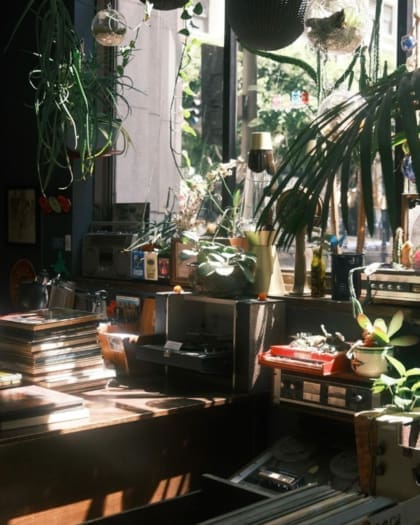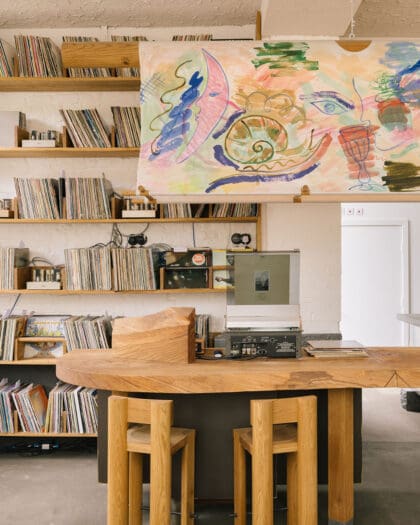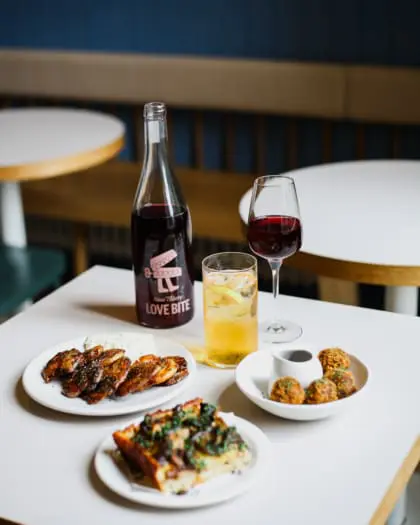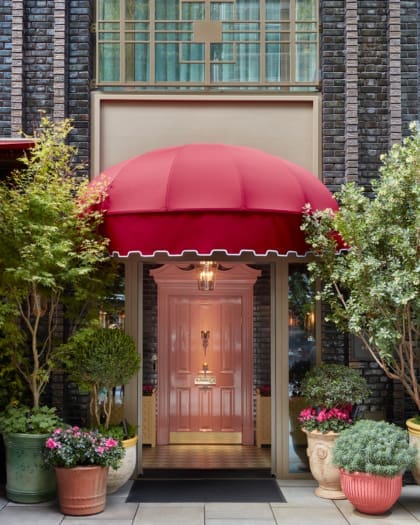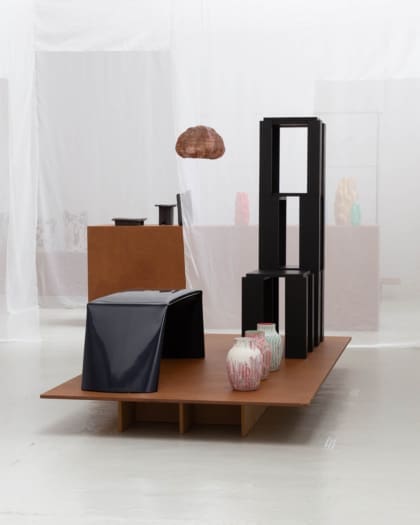
Can global design festivals really change the world?
At their best, design festivals are a celebration of creative expression and a platform for underrepresented voices and sustainable design. Yet beyond the glitzy panels, product launches and parties, should they be doing more for the planet?
It’s early evening in Nyhavn, on Copenhagen’s rapidly evolving northern waterfront, when a sudden downpour sends a well-heeled congregation running for cover at Audo House. It’s the first evening of 3 Days of Design – fast becoming one of Europe’s most significant festivals of its kind – and here, inside a merchant’s house that now houses a sleek concept store, co-working space and 10-room residence, spirits are high despite the deluge.
As the DJ, who’s shifted his decks indoors from the terrace, soundtracks the conversations of a lively crowd, staff offer tours of the immaculate restaurants and suites that double as a showcase for Audo Copenhagen’s warm-hued furniture and homeware.

Over the days that follow, around 20,000 visitors criss-cross the city’s 11 design districts, which stretch from the newly revived Carlsberg neighbourhood in the south west to the warehouses of Refshaleøen in the north-east. More than 400 events take visitors from morning coffee and kanelsnegle to product launches, panel discussions, studio tours and craft workshops.
There are sun-dappled networking events, surprising showcases in historic venues and afterparties stretching across the city. All of which represents quite a growth from 2013, when founder Signe Byrdal Terenziani launched the event with just four brands in tow.
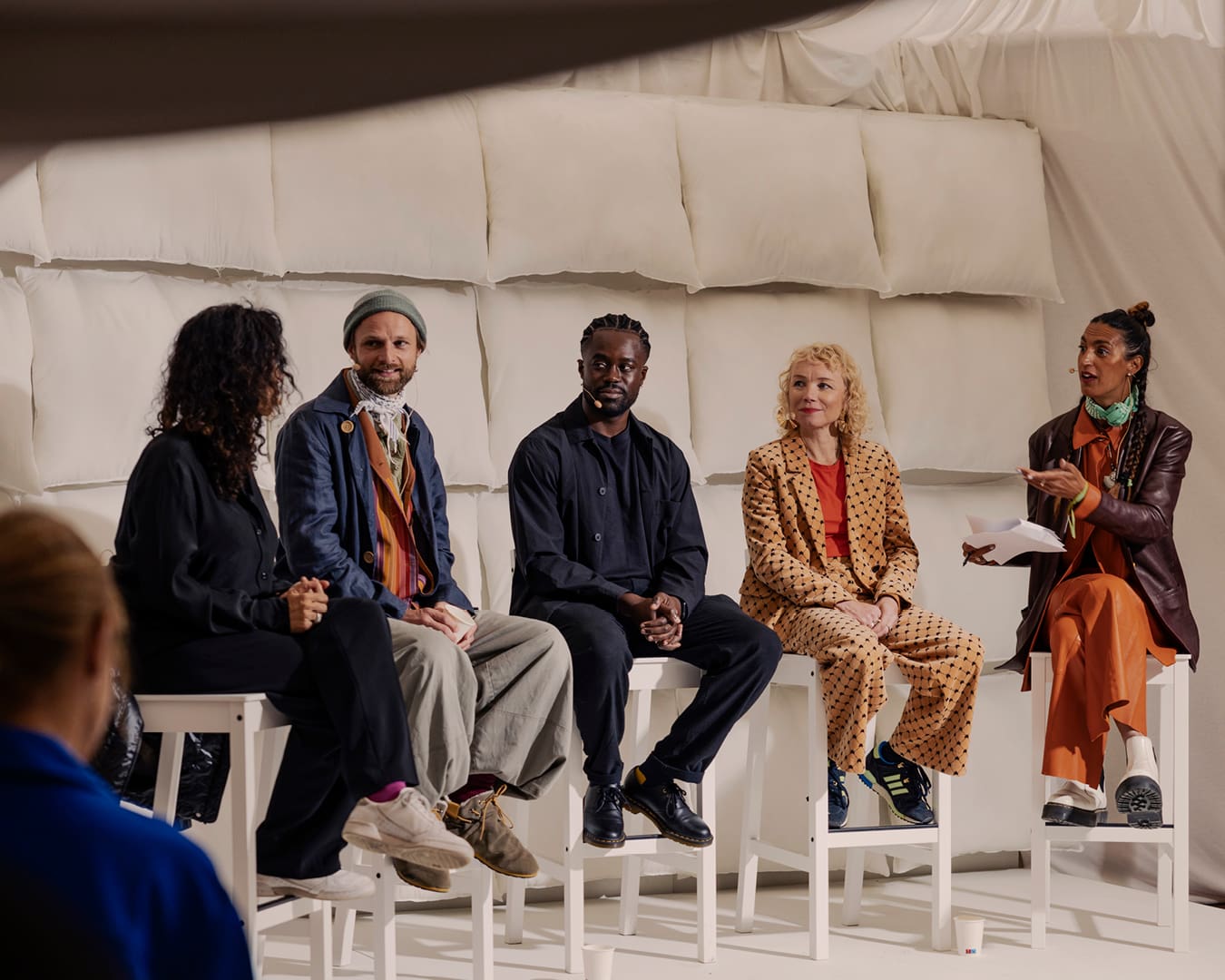
It’s the latest design industry get-together on a busy circuit that counts the vast showrooms of Stockholm Design Week and Salone del Mobile in Milan among its biggest events. Among these events, 3 Days of Design is emerging as a popular stop-off – fitting given Denmark’s significant design credentials stemming from the rise of midcentury modernism.
“There is definitely a growing buzz around 3 Days of Design – a sense that the festival has really matured in recent years. Yet it still retains the feeling of being low-key and intimate – largely thanks to the navigable layout of Copenhagen,” says Marie Kristine Schmidt, chief brand officer at Gubi.
This year the storied Danish design house showcased new pieces in a tactile exhibition inspired by Anni and Josef Albers while also launching a campaign with Unicef with proceeds raised from a limited-edition reissue of Pierre Paulin’s Pacha Lounge Chair directed to the world’s crisis zones. “The event is not only a chance to champion our own products, but also to celebrate Danish design and to make the case for Copenhagen as a major global design centre.”


Beyond Scandi stereotypes
Yet among Copenhagen’s cherished chairmakers and heritage brands, what’s striking at this year’s event is the diversity of ideas on display. A wander along the Frederiksholms Kanal leads me to a gallery space taken over by Ukurant, the Danish design collective that platforms emerging designers and experimental design. A throng of engaged creatives sip on pilsner while examining exhibits that include sculptural aluminium vessels, black ash-hued tables and pendant lamps made from pigs’ intestines.
“We always try to do something new,” says Ukurant’s co-founder Josefine Krabbe Munck. “This event shows that Danish design is not only about tradition and well-crafted wooden chairs and that you come to Copenhagen to experience the new, the sustainable, the sculptural and the craft – both conventional and unconventional.”
Hosting exhibitions during this week is a chance for Ukurant and its designers to shape conversations when the world’s eyes are on Copenhagen. “Even though a lot of the events are still focused on commercial design, it is nice to see experimental and bold design getting more attention,” says Krabbe Munck. “We hope that we inspire more young designers to be who they are and to chase their dream.”
A particularly refreshing aspect of 3 Days of Design is its inclusivity. At many similar global events, visitors need to buy tickets but here, all the events are open to anyone, whether they work in design or not, helping it feel less cliquey and elitist while also offering inspiration for the next generation of designers.

Emerging design destinations
A number of alternative design fairs have joined the traditional big hitters on the festival circuit in recent years. Titi Ogufere launched Design Week Lagos in 2019 and – as Africa’s leading design festival – it now attracts more than 300,000 visitors, with the next event in October. “Historically, African design has been underrepresented globally,” says Ogufere, referencing 2020 research that highlighted that from the collections of 4,417 leading global brands, only 14 involved Black designers. Since her first event, she’s witnessed the Lagos and Nigerian design scene evolve significantly, which has helped transform Lagos into a regional hub of creativity.
“Initially, the design community here lacked visibility,” she says, adding how technological advancements, especially in social media, have helped arm designers with tools to showcase their work and connect globally. “African designers are redefining their identity in a technological world, combining local materials and craftsmanship with modern techniques. Initiatives like Design Week Lagos promote their work, ensuring they receive the recognition and opportunities they deserve.”

Potential for better
At their very best, such events have the power to change the world. “Festivals promise the cutting edge of design today. They aim to represent the best humanity has to offer with relation to design, in terms of whom it’s for, what it’s made of, and how it’s better than what came before,” says Sabine Zetteler, founder of London-based design PR company Zetteler. “In the process, they also help to position the host city as a place of forward-thinking cultural significance on the global stage.”
However, Zetteler notes that since the pandemic, these events have seemed a little confused. “Abroad, the design scene seems to revolve around hanging around together with an Aperol or cinnamon bun in hand and it can feel a bit like a members’ club, where the interior design, the people and the music are the same wherever you go,” says Zetteler, who set up Design Can as a campaign and online tool calling for the design industry to be representative of the world it serves.
“It feels as though the same model is plonked into shops and galleries, stately homes and open squares. Wherever you are, it’s still a bunch of plinths with shiny new things on top.”
Exhibiting at festivals is enormously wasteful. We need to do more to ensure that circular thinking is entrenched in festival planning
Environmental concerns
With much of a festival’s significant carbon footprint stemming from transportation, both of products and attendees, many are questioning their continued necessity. “People have started asking what value they really bring, whether they are worth the carbon cost,” says Schmidt, outlining how, under increased scrutiny, festivals are forced to engage with what they’re offering and design brands need to ask themselves whether they have a reason to be there beyond having a new chair to sell.
“One of the elephants in the room is the fact that exhibiting at festivals is often enormously wasteful, with exhibition sets heading straight to landfill after their moment in the spotlight. We need to do much more to ensure that circular thinking is entrenched in festival planning for all participants.”
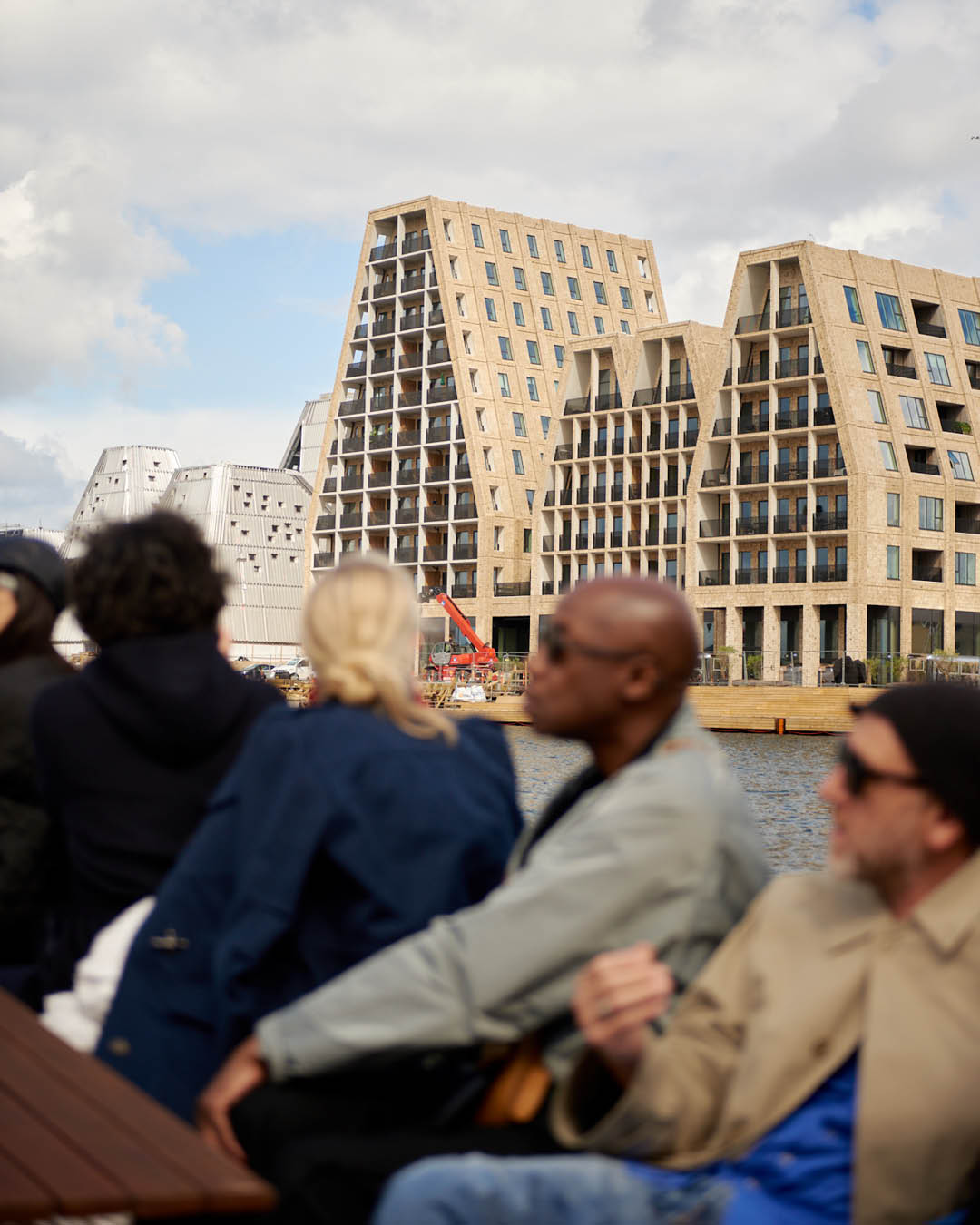
As more than one attendee this year put it, events such as Salone del Mobile – which brings more than 2,000 exhibitors and 400,000 visitors to Milan each spring – are being “taken over by car brands” and Instagram-ready “moments”, referencing how big business, including fashion and tech brands, often take the emphasis away from the industry’s grass roots, skewing any positive messages of sustainable practices towards those of mass consumption.
“Design festivals are not addressing the climate crisis. Sometimes they provide a platform for ideas for more sustainable methods and materials, but they are, at best, showcasing ways of mitigating the damage rather than offering meaningful solutions,” says Zetteler. “There are design ‘experts’ who do all the talks about their ‘conscious practices’ but, in truth, they need to make less, think more and find alternative routes to making themselves wealthy.”
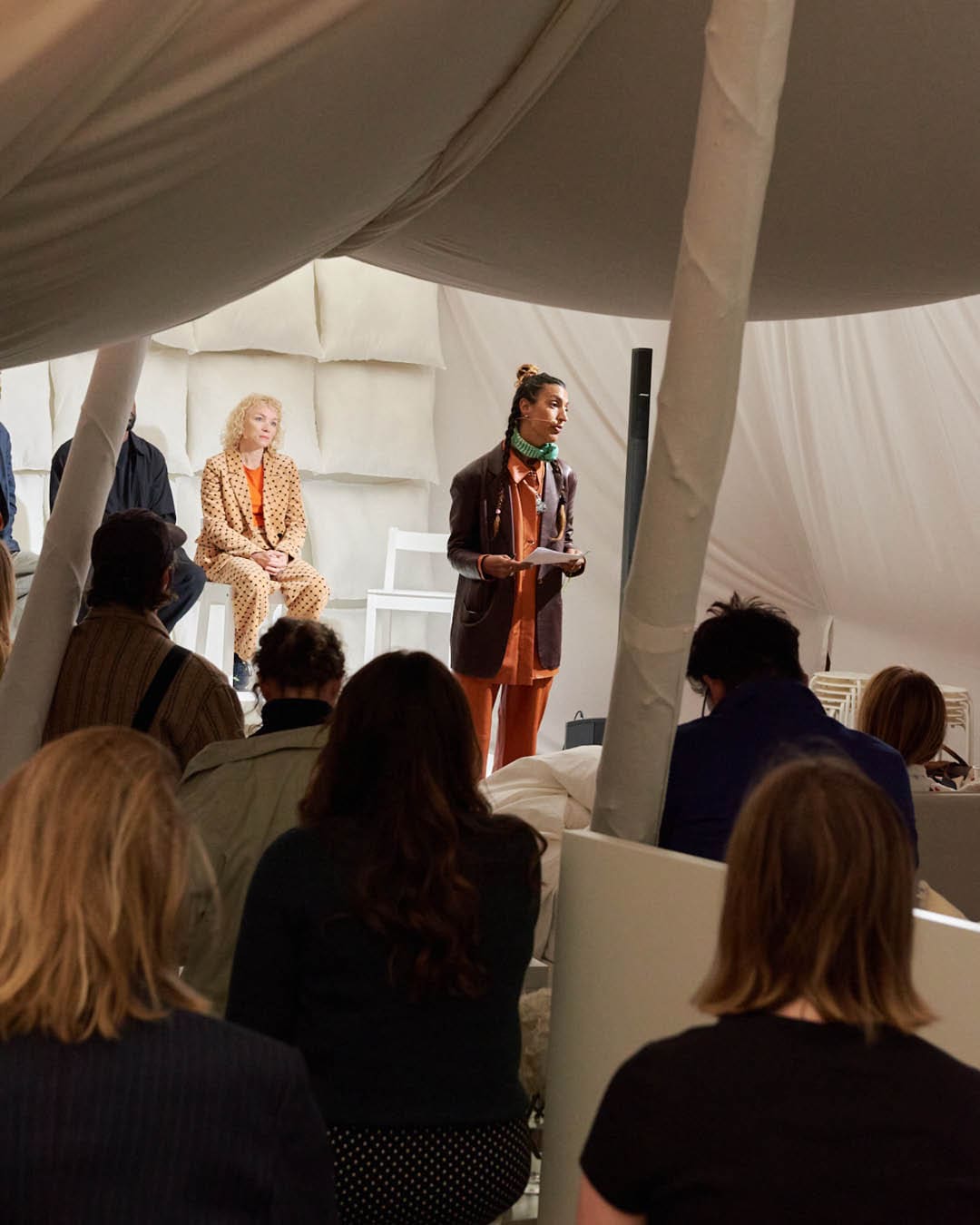
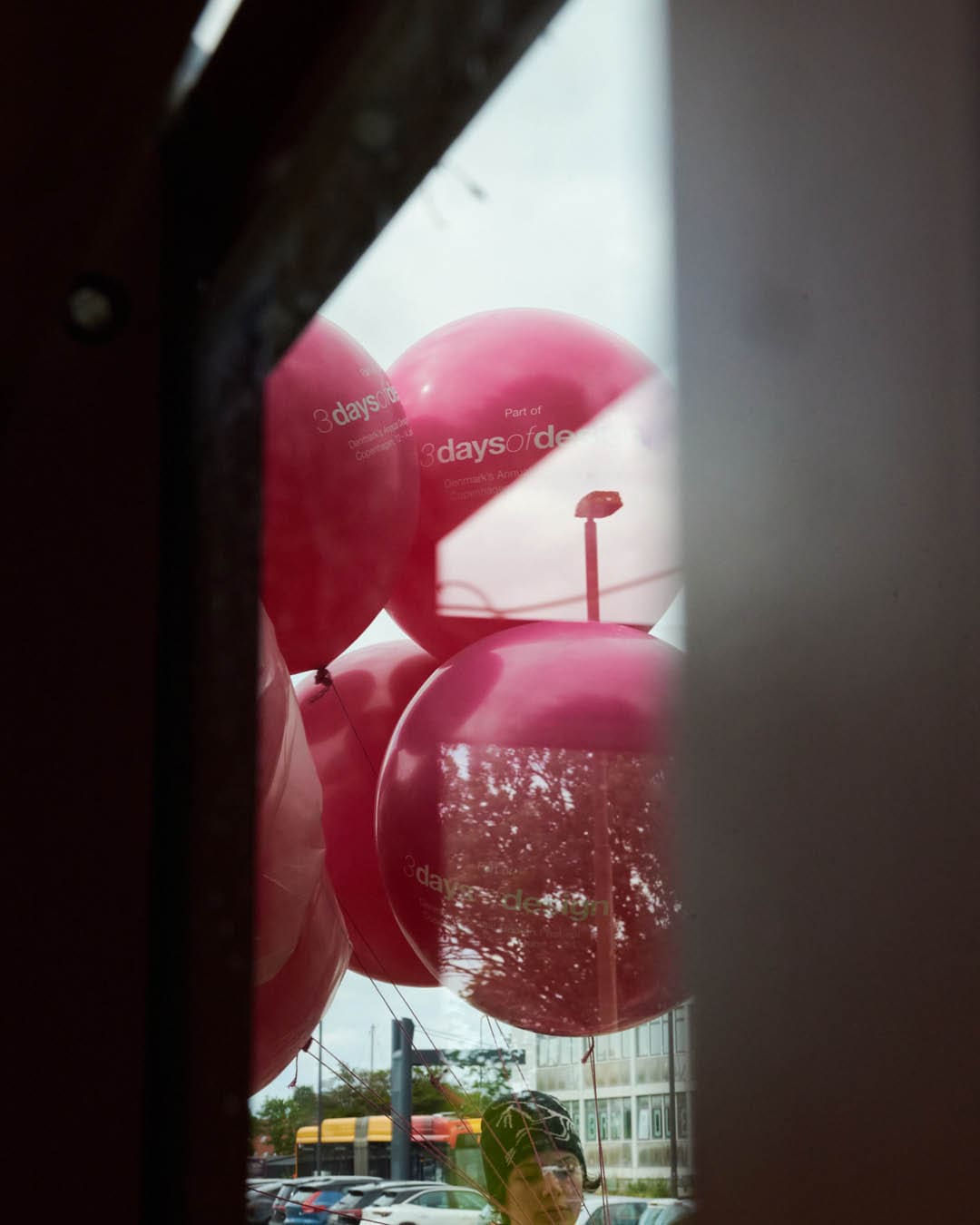
Some say far fewer global events would be preferable, replaced perhaps by the online events that defined the pandemic period, although others argue that this would diminish the very tactile nature of many of the products on display. What most agree on is that alternative, less carbon-intensive methods of making, transporting and showing products worldwide is essential.
Given the incredible platform that design festivals can provide bright ideas and potential global solutions to the climate crisis, Zetteler offers up her own solution for retaining the circuit’s continued relevance. “We need to reward, amplify and enable the people who are thinking beyond their own turnover to what the world will look like for the next generation, not just the next launch season.”


